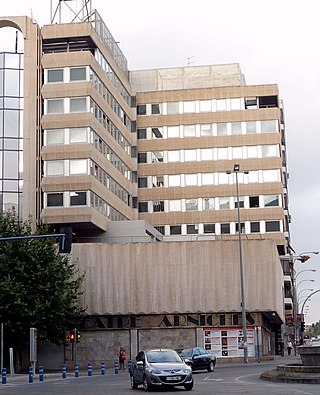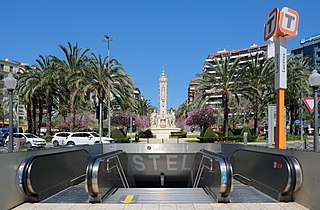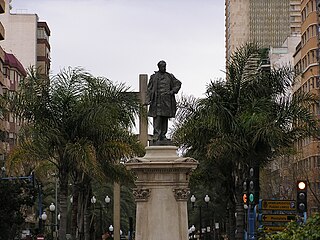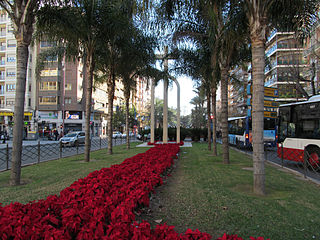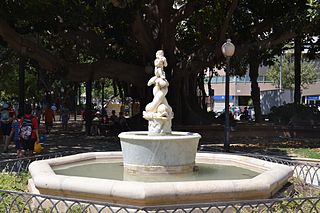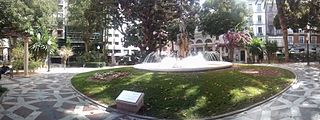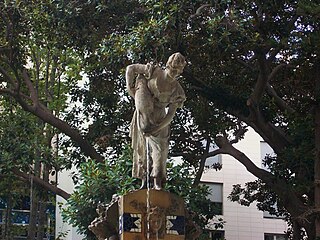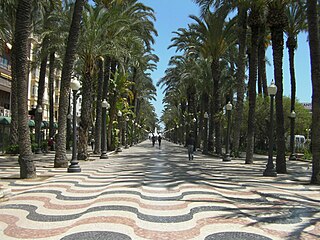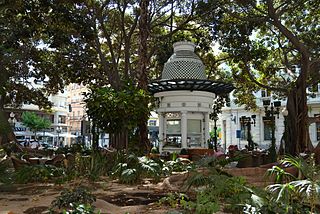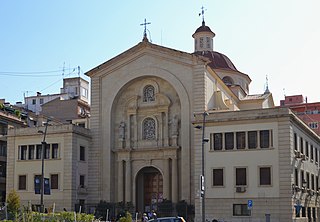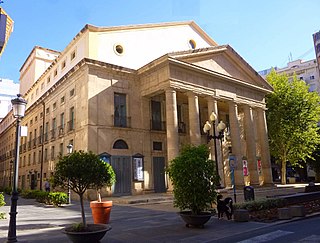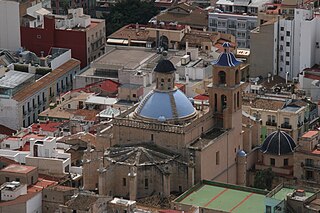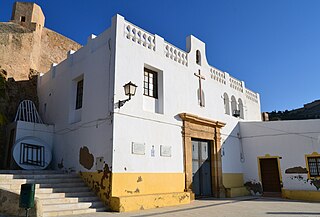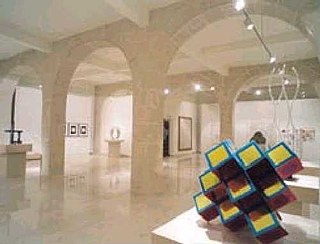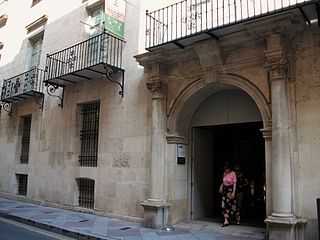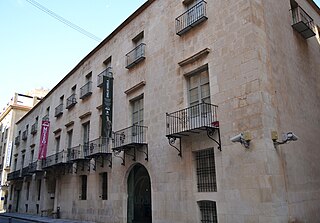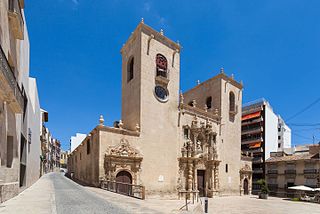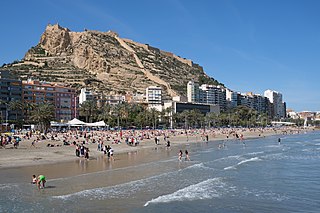Self-guided Sightseeing Tour #1 in Alicante, Spain
Legend
Guided Free Walking Tours
Book free guided walking tours in Alicante.
Guided Sightseeing Tours
Book guided sightseeing tours and activities in Alicante.
Tour Facts
5.7 km
169 m
Experience Alicante in Spain in a whole new way with our self-guided sightseeing tour. This site not only offers you practical information and insider tips, but also a rich variety of activities and sights you shouldn't miss. Whether you love art and culture, want to explore historical sites or simply want to experience the vibrant atmosphere of a lively city - you'll find everything you need for your personal adventure here.
Activities in AlicanteIndividual Sights in AlicanteSight 1: Teatre Arniches
The Arniches Theatre is located on Aguilera Avenue in the city of Alicante, Valencia. In addition to theatrical performances, it hosts music concerts and congresses.
Sight 2: Plaça dels Estels / Plaza de los Luceros
The Plaza de los Luceros is the most emblematic of the Spanish city of Alicante. It is located at the confluence of four avenues, General Marvá to the north, Federico Soto to the south, Alfonso el Sabio to the east and Estación to the west. It has a monumental fountain built in 1930 by the Alicante sculptor Daniel Bañuls Martínez in the centre, which popularised the name, from that moment on, of Plaza de los Caballos.
Sight 3: Eleuterio Maisonnave
The monument to Eleuterio Maisonnave y Cutayar is located on Maisonnave Avenue, in Alicante, Spain. He represents Eleuterio Maisonnave, who was the first mayor of Alicante elected by universal suffrage (male), as well as Minister of the Interior during the First Spanish Republic and founder of the first savings bank in the city of Alicante.
Sight 4: Cruz de los Caídos
The Cross of the Fallen is a monument in the city of Alicante, Valencia, located in a traffic roundabout between the avenues of Doctor Gadea and Federico Soto, and tangent to the Plaza de Calvo Sotelo, in the place originally occupied by the monument in Maisonnave. Initially it was called the Monument to the Fallen for Spain and for the Fatherland.
Sight 5: Parc de Canalejas / Parque de Canalejas
Canalejas Park is the oldest park in the Spanish city of Alicante. It is located parallel to Loring Avenue and the marina, and is adjacent to the esplanade of Spain.
Sight 6: Plaça de Gabriel Miró / Plaza de Gabriel Miró
The Plaza de Gabriel Miró is a square located in the city of Alicante (Spain). It is also popularly known as Plaza de Correos, in memory of the main offices of the State Society of Posts and Telegraphs that were located in the square.
Sight 7: La Aguadora
La Aguadora, also called Moza del cántaro, is an urban sculpture located above a fountain in the Plaza de Gabriel Miró in the city of Alicante (Spain).
Sight 8: Explanada de España
The Explanada de España, also known as Paseo de la Explanada or simply La Explanada, is a promenade in the Spanish city of Alicante. It runs parallel to the port and the Paseo de los Mártires de la Libertad, from the Puerta del Mar to the Canalejas park, and is one of the most popular pedestrian streets in the city.
Sight 9: Plaça del Portal d'Elx / Plaza Portal de Elche
El Portal de Elche is a central square in the Spanish city of Alicante.
Sight 10: iglesia Nuestra Señora de Gracia
The church of Virgin of Grace is a church located in the square of Montanyeta of the city of Alicante.
Wikipedia: Església de la Mare de Déu de Gràcia d'Alacant (CA)
Sight 11: Teatro Principal
The Teatro Principal is the most important theater building in Alicante, located in Plaza de Ruperto Chapí, s/n. In 1846, construction work began on what was then called the Teatre Nou in Plaça del Barranquet to differentiate it from the old theatre in Carrer de Liorna. The theater was inaugurated on September 25, 1847. Ten years later it was renamed Teatro de Alicante and, shortly after, Teatro Principal. The project was developed by the architect from Alicante Emili Jover Perrón.
Sight 12: Cocatedral de Sant Nicolau de Bari
The Co-Cathedral of St. Nicholas of Bari is a Catholic co-cathedral located in Alicante, in the Valencian Community of Spain. The church, part of the Diocese of Orihuela-Alicante is dedicated to Saint Nicholas and was elevated to the title of cathedral on 9 March 1959 by Pope John XXIII.
Sight 13: Ermita de Santa Cruz
The Hermitage of the Holy Cross is a temple in the city of Alicante. It is located in the neighborhood of Santa Cruz, on the slopes of Benacantil and close to the Castle of Santa Bárbara. It gives its name to the neighborhood.
Sight 14: Ermita de Sant Roc
The hermitage of San Roc is a temple in the neighborhood of the same name in the city of Alicante.
Sight 15: MACA - Museo de Arte Contemporáneo de Alicante
Alicante Museum of Contemporary Art is a municipal museum in Alicante, Spain. It exhibits 20th-century and contemporary art. Created in 1976 thanks to Eusebio Sempere, and reopened in 2011 after a major renovation, the museum now consists of three permanent collections of about 800 art pieces. The museum is located in Asegurada building, the oldest civil building remaining in the city.
Wikipedia: Alicante Museum of Contemporary Art (EN), Website
Sight 16: Museo Bellas Artes Gravina
Gravina Museum of Fine Arts is a museum in the city of Alicante, Spain, located in the Palacio del Conde de Lumiares, a four floor building constructed between 1748 and 1808 and declared a historical monument.
Sight 17: Palau Gravina
The Gravina Palace or Palace of the Count of Lumiares is a historic building in the city of Alicante. It is currently the headquarters of the Gravina Museum of Fine Arts.
Sight 18: Basílica de Santa María
The Basilica of Santa Maria is the oldest active church in Alicante, Spain. It was built in Valencian Gothic style between the 14th and 16th centuries over the remains of a mosque.
Sight 19: Castell de Santa Bàrbara
Santa Bárbara Castle is a fortification in the center of Alicante, Spain. It stands on Mount Benacantil bordering the sea, which gave it enormous strategic value since from it you can see the entire bay of Alicante and its land surroundings. The image of the mountain from the beach resembles a face, which is why it is called "the face of the Moor" and is an icon of the city of Alicante.
Share
Disclaimer Please be aware of your surroundings and do not enter private property. We are not liable for any damages that occur during the tours.
GPX-Download For navigation apps and GPS devices you can download the tour as a GPX file.
